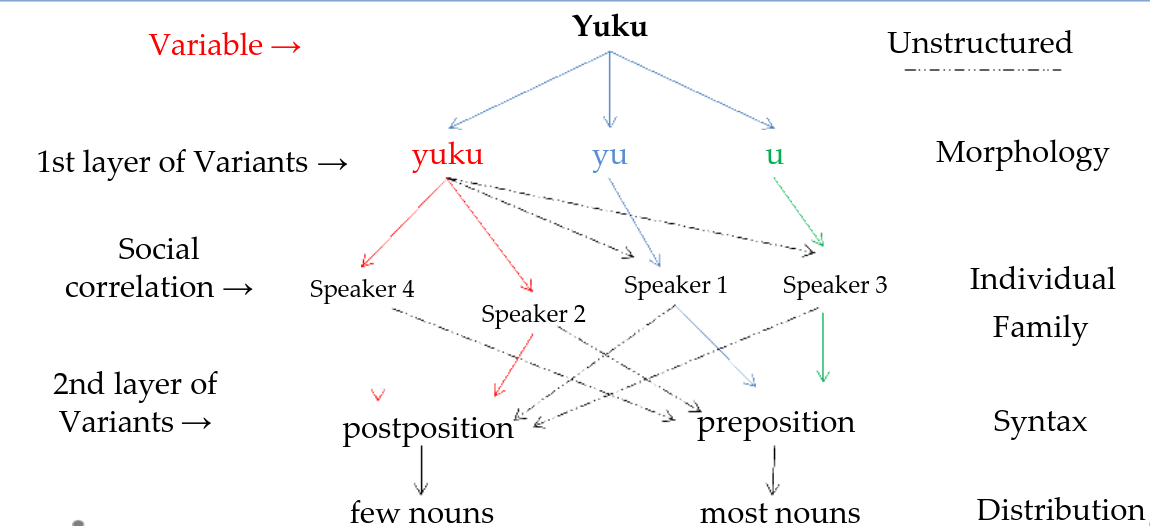Words like the wind: Documenting variation in critically endangered languages
March 19, 2021 - Boston University
Agenda
- Critically endangered languages
- Ayapaneco
- Documenting variation
- Conclusions
“Words are like the wind. As soon as you feel them, they disappear, and later you don't know what happened.”
[la lengua] es como el aire, que enseguida lo sientes y luego no sabes qué pasó. Asi es la palabra.
Manuel Segovia S.
Critically endangered languages
- Inter-generational (or traditional) transmission of the language interrupted for decades
- Youngest speakers are grandparents and older
- Small proportion of speakers in relation to larger community
- Sporadic use of language & reduced to few private domains
- Lack or limited literacy in the language
Critically endangered languages are minority and minorized languages spoken by marginalized communities
Global phenomenon

Ayapaneco
Mixe-Zoque family

Autonym
numde oode
'true voice, true speech, true language'
Ayapaneco
- Spoken in Ayapa (5,500 inhabitants)
- Speakers: 8 remaining elders and a younger heritage speaker (0.2% of total population)
- Language transmission interrupted for over 60 years
- Language rarely used in daily life
- Interactions among the local population conducted in Spanish
- Previously under-documented & under-described
- First writing system developed in 2019
Ayapaneco
Is an indigenous, minority and minorized language spoken mainly by elders in a context of marginalization. It could disappear in the next 5-10 years (critically endangered).
Why variation?
“A recognition of variation implies that we must recognize that a language is not just some kind of abstract object of study. It is also something that people use.“
Variationist hypothesis
Orderly heterogeneity principle:
Linguistically patterned -> intra-linguistic
Socially patterned -> extra-linguistic
Orderly heterogeneity principle
Examples:
Linguistically patterned -> definite article in Spanish (el, la, las, los)
Socially patterned -> vacation (US) vs holiday (UK)
2 different approaches
| Variationist | Documentary | ||
|---|---|---|---|
| Language | Documented | Under-documented | |
| Linguistic focus | Narrow | Wide | |
| Sample | Big | Small | |
| Context | WEIRD* | Non WEIRD |
*Western, educated, industrialized, rich and democratic (Henrich et al. 2010)
What if you want to document variation in an indigenous, minority, minorized, critically endangered and under-documented language spoken in a predominantly NORM* context ?
*Nonmobile, older, rural males (Chambers & Schilling 2013)
Theoretical & methodological blind spots
- Limited language documentation & description
- Very small population
- Socially homogeneous population
- Limited interactions in the language
- Common social variables used in WEIRD societies may not work: religion, education, age, class, etc.
Challenges
- Extensive variation in use among 4 very socially homogeneous speakers: men between 72-84 years old, same religion, profession, born and raised in Ayapa
- No evident correlation between variables and common social parameters (age, gender, religion)
- Without a previous description, it's a complex task to identify the rules governing intra-linguistic variation
Patterns of variation identified
Intra-linguistic: rule-governed
Sociolinguistic: individual (intra-speaker), family and partnership
Unstructured
Unstructured variation
Present in the language practices of more than one speaker but not linguistically or socially patterned
24 out of 52 tokens of variation correspond to unstructured
Documented cases in other critically endangered languages around the world (Dorian 1973; Cook 1989; Toivonen 2007)
Linguistic
Social
Unstructured
Patterns of variation
Interplay of co-variation
Structured & unstructured?

Implications
- The degree of language endangerment correlates with the proportion of unstructured variation
- Common social variables used for WEIRD societies may not always be pertinent
- Social homogeneity is not equal to linguistic homogeneity
- Variation is a linguistic universal
Multifactorial explanation
- The size of speakerhood impacts the structure of the language (Raviv et al. 2020)
- No children to "filter" variables (Díaz-Campos 2004)
- Not speaking with strangers has an impact on the language (Wray & Grace 2007)
“Words are like the wind. As soon as you feel them, they disappear, and later you don't know what happened.”
Manuel Segovia S. - RIP 2020